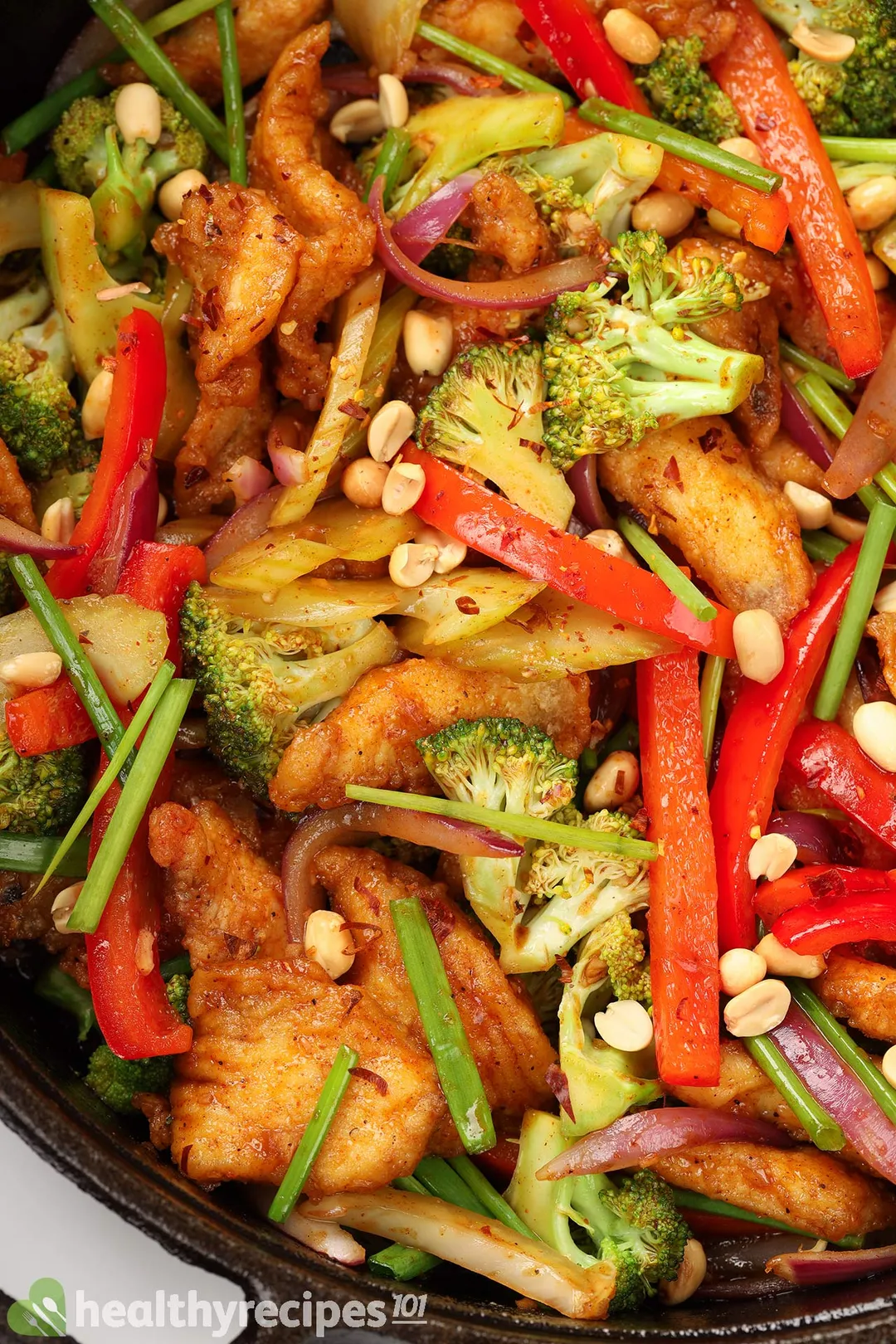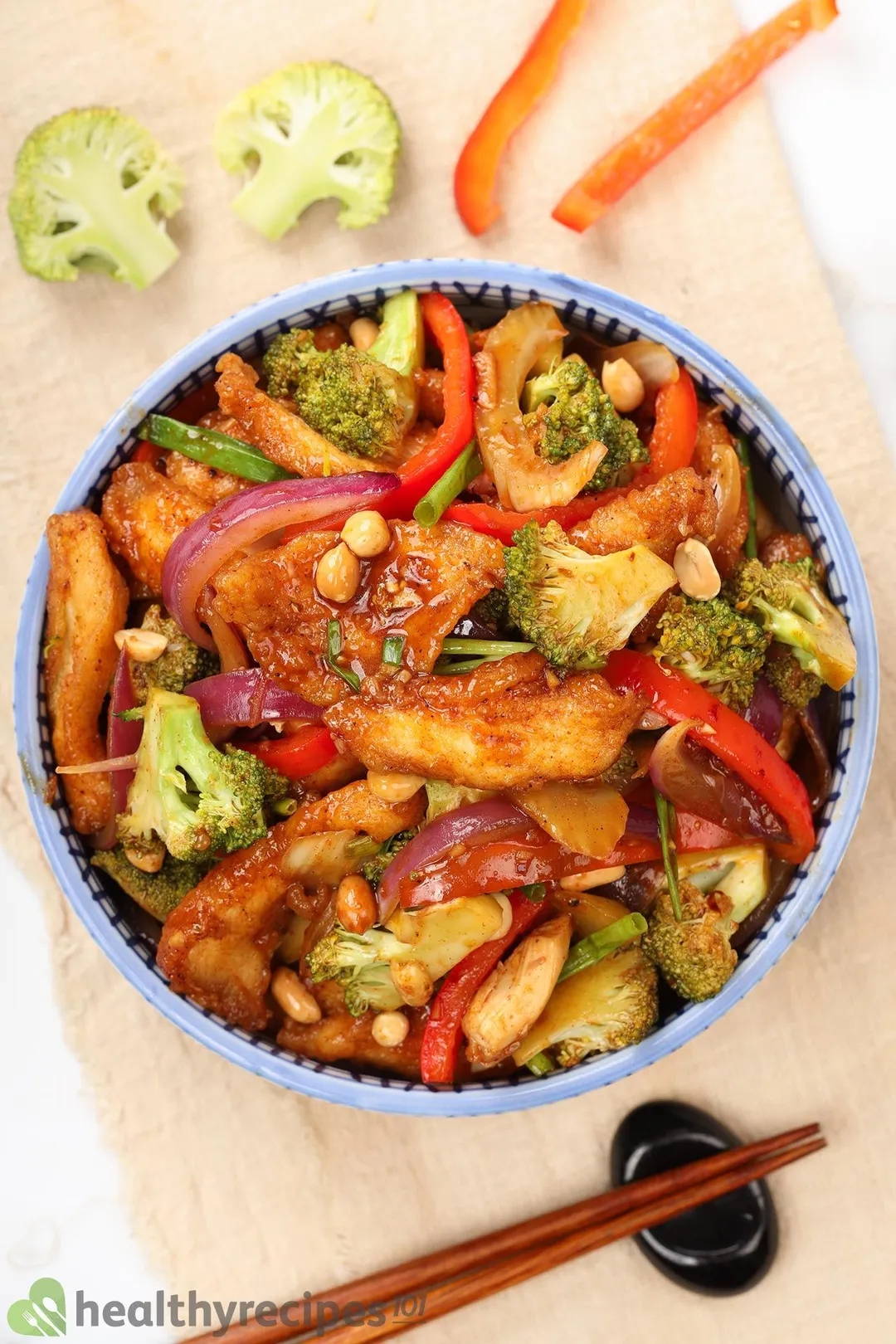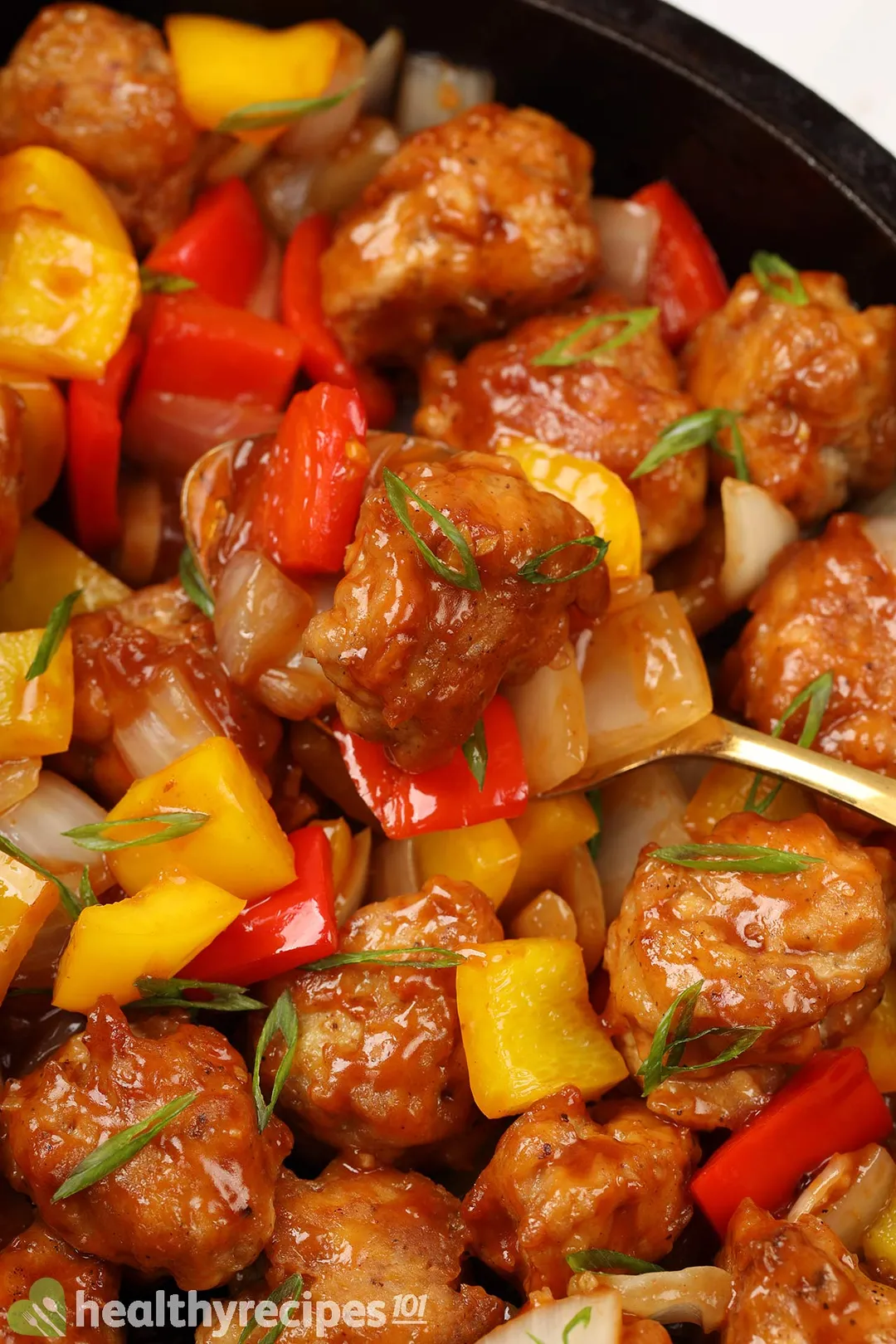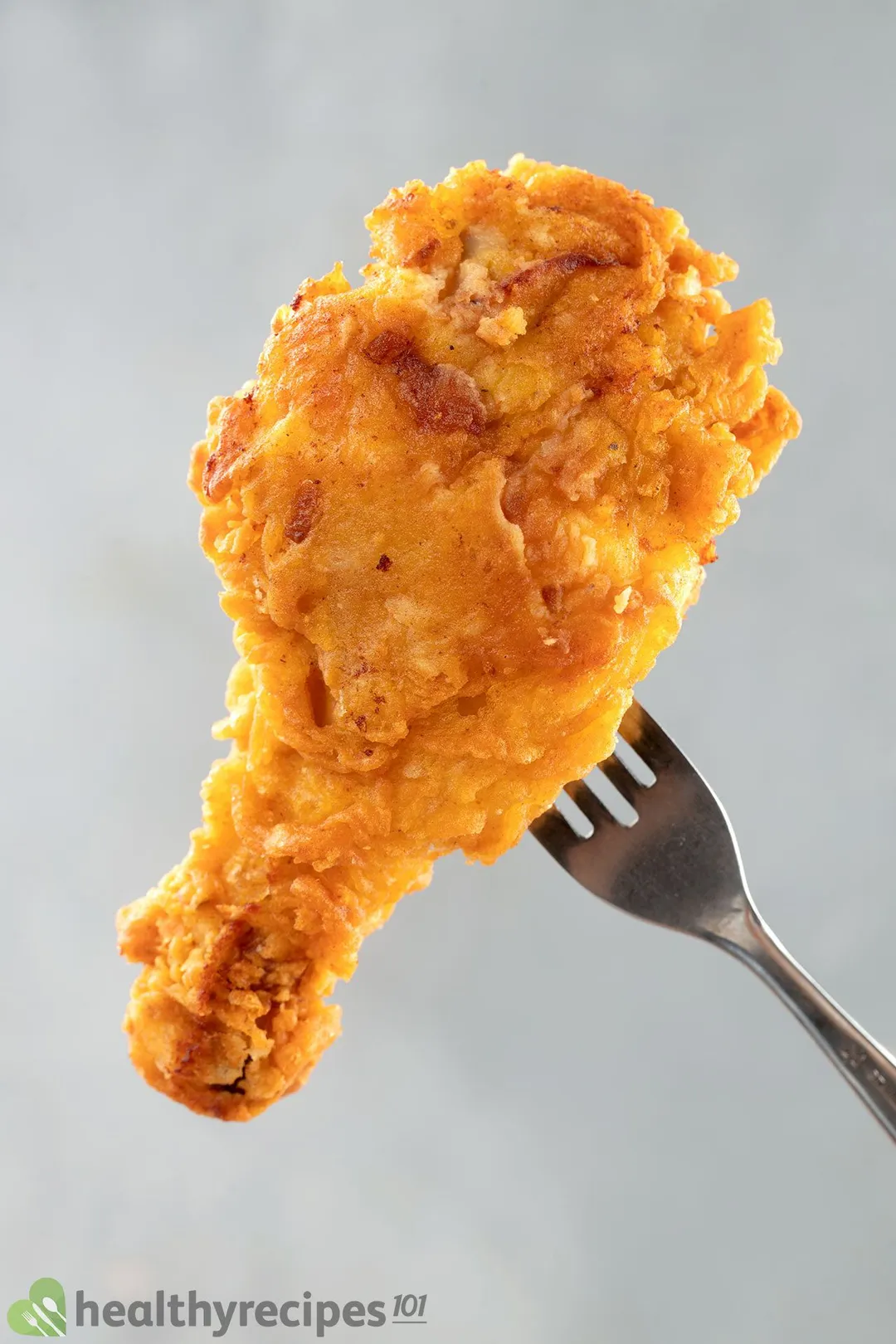Our spicy food-loving hearts sing with joy when this Hunan chicken hits the dining table. Its alluring appearance and tempting aroma promise a world of savory, fiery goodness—and it delivers marvelously! Even better, it comes together in just 20 minutes and might take even less time to devour.
What Is Hunan Chicken?
Hunan chicken originated in the Hunan province of China. This region is known for its generous use of chili peppers as well as other pungent and spicy ingredients, all encapsulated perfectly by this Hunan chicken.
When making this recipe, we toned down the spiciness a bit so it can benefit both those who like spice and those who don’t, especially those who are unfamiliar with Asian cuisine.
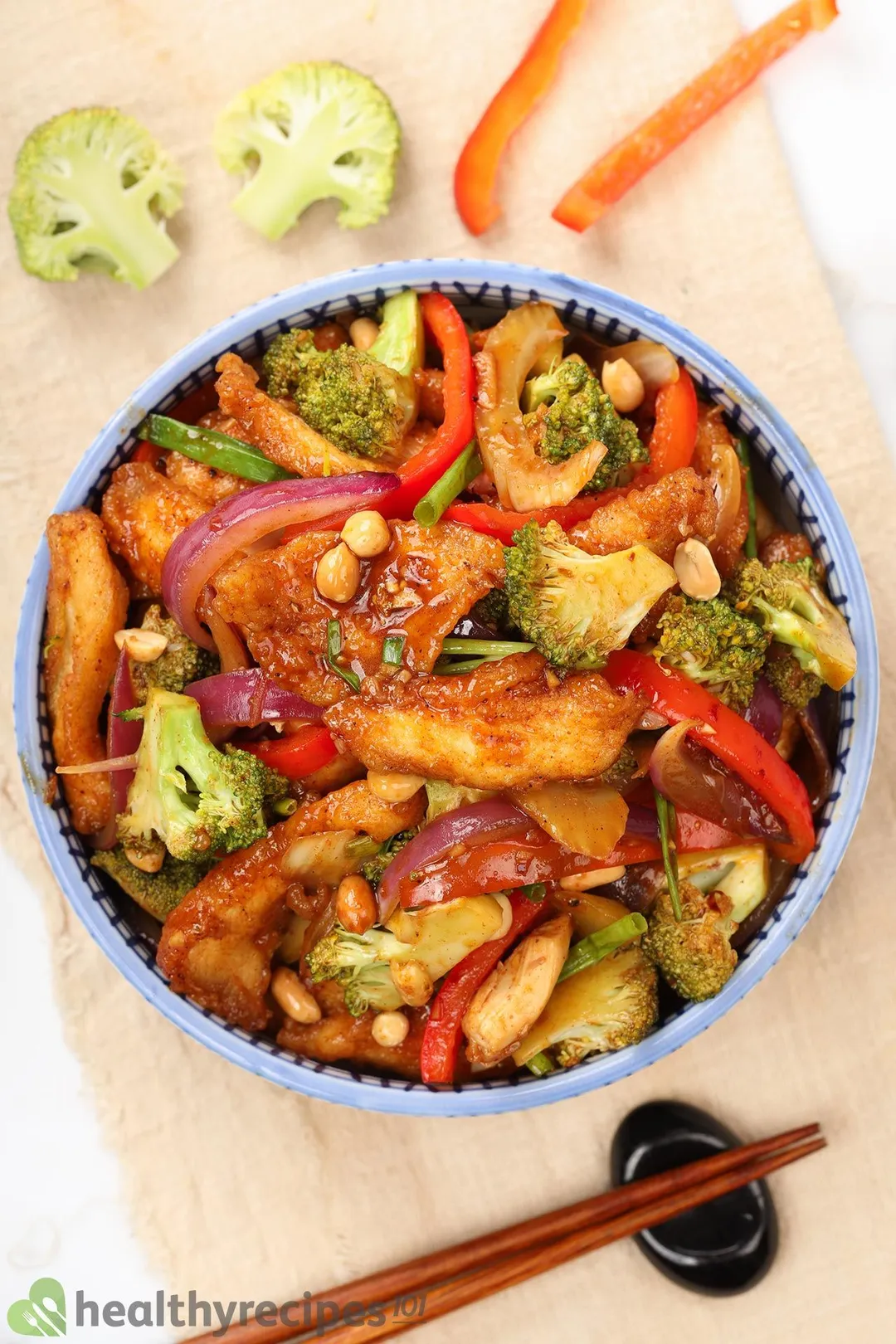
Our Hunan chicken starts with thinly sliced chicken breast coated in cornstarch, then deep-fried to golden brown perfection. It takes on bold, slightly tart, spicy flavors from fresh chili peppers, garlic, and shallots. A variety of vegetables also join the frying pan — broccoli, celery, red onion, and red bell pepper are in this recipe. For the final step, everything is tossed together in a rich tasty brown sauce.
Hunan Chicken vs Szechuan Chicken
Both Hunan chicken and Szechuan chicken are stir-fried dishes characterized by their authentic spicy flavors. However, there are significant differences between each of them:
- Origins: Although both originate in south-central China, Hunan chicken belongs to the Hunan province, whereas Szechuan chicken belongs to the Szechuan province.
- Spice levels: Hunan chicken gets its spiciness from the generous use of fresh chilies or red chili paste, while Szechuan chicken calls for dried Sichuan peppers. In general, Szechuan chicken is considered sweeter and less oily than Hunan.
- Vegetables and nuts: Szechuan chicken also contains lots of garlic, onion, roasted peanuts, and sesame seeds, while Hunan Chicken leans more heavily on colorful vegetables such as bell peppers, carrots, and broccoli.
Is This Recipe Healthy?
Yes, we believe it is. We strived to make this recipe on the healthy side and keep all the nutrition values within healthy limits.
Our Hunan chicken recipe uses skinless boneless chicken breast, a lean protein with little saturated fat (only 1.83 grams in one breast). Moreover, with a colorful array of vegetables such as bell peppers, broccoli, and onion, this dish is also packed with fiber, vitamins, and minerals that greatly diversify its nutritional profile.
It requires just 1.5 tablespoons of olive oil to cook both the chicken and the veggies. So a combination of necessary macro and micronutrients, as well as a reduced amount of fat and sodium, help to keep this dish healthy.
Main Ingredients
To control the sodium level of this dish, opt for a reduced-sodium or unsalted version of the ingredients. You can also make a large batch of the Hunan sauce and freeze it in portions for future dishes with other proteins.
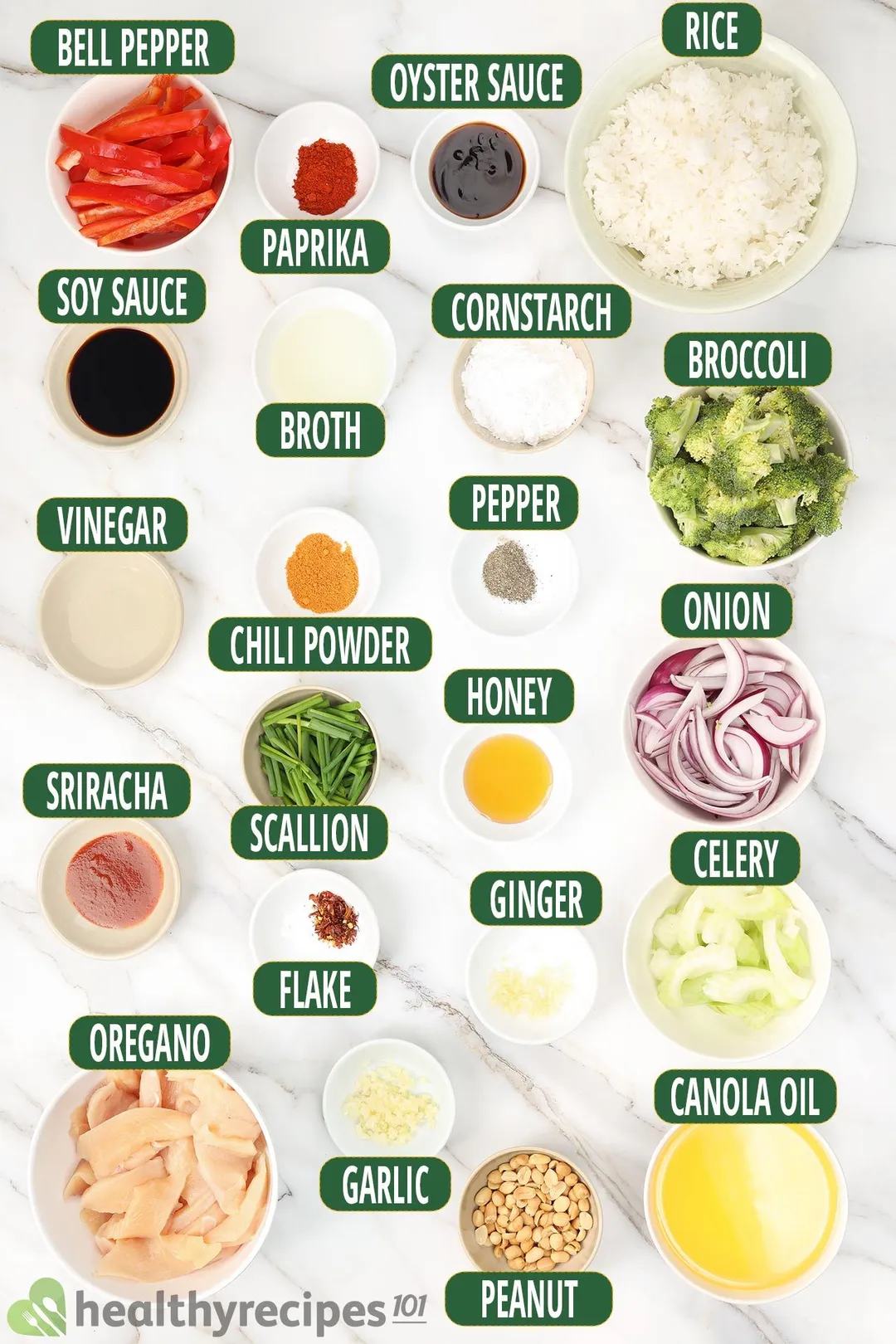
- Skinless boneless chicken breast
We use thinly sliced chicken breast in this recipe because it’s lean, cooks fast, and requires very minimal preparation for this dish. Another meat cut you can also opt for is boneless skinless chicken thighs, although note that it does contain a slightly higher fat content.
- Cornstarch
We use just enough cornstarch to give the chicken a light coating and keep it from drying out without creating a crispy exterior. The cornstarch coating also acts as a binder to absorb the savory sauce.
The addition of cornstarch helps thicken the Hunan sauce as it simmers. The longer it simmers, the thicker the sauce will get, so there's no need to add an extra slurry to reach your desired consistency. If it happens to get too thick, simply whisk in additional chicken broth to thin it out.
- Vegetables
In the veggie mix, we have broccoli, celery, red onion, and red bell pepper for diverse colors and textures. You can use any vegetables that you prefer. Other great additions include mushrooms, bamboo shoots, carrots, zucchini, and cabbage.
- Hunan Sauce
Our Hunan sauce is made of cornstarch, garlic, rice vinegar, honey, ginger, chicken broth, oyster sauce, soy sauce, chili powder, sriracha, paprika, and pepper.
This sauce is a medley of deep and bold flavors, with a hint of heat from the chili and pepper and a mild sweetness from the honey. You also get a tangy, acidic undertone from the combination of garlic, ginger, and rice vinegar.
- Peanuts (for garnishing)
To add a nice crunch to Hunan chicken, we top it with a handful of roasted peanuts. Feel free to swap them with your favorite nuts, for example, cashews or almonds.
- Rice
Besides white rice (our choice for today's recipe), there are other options such as jasmine rice, brown rice, cauliflower rice, and quinoa. Likewise, pairing this dish with ramen or soba noodles is another way to tweak the traditional style. You can also buy instant rice pouches if you’re short on time or just want to make a single serving.
Tips for Cooking
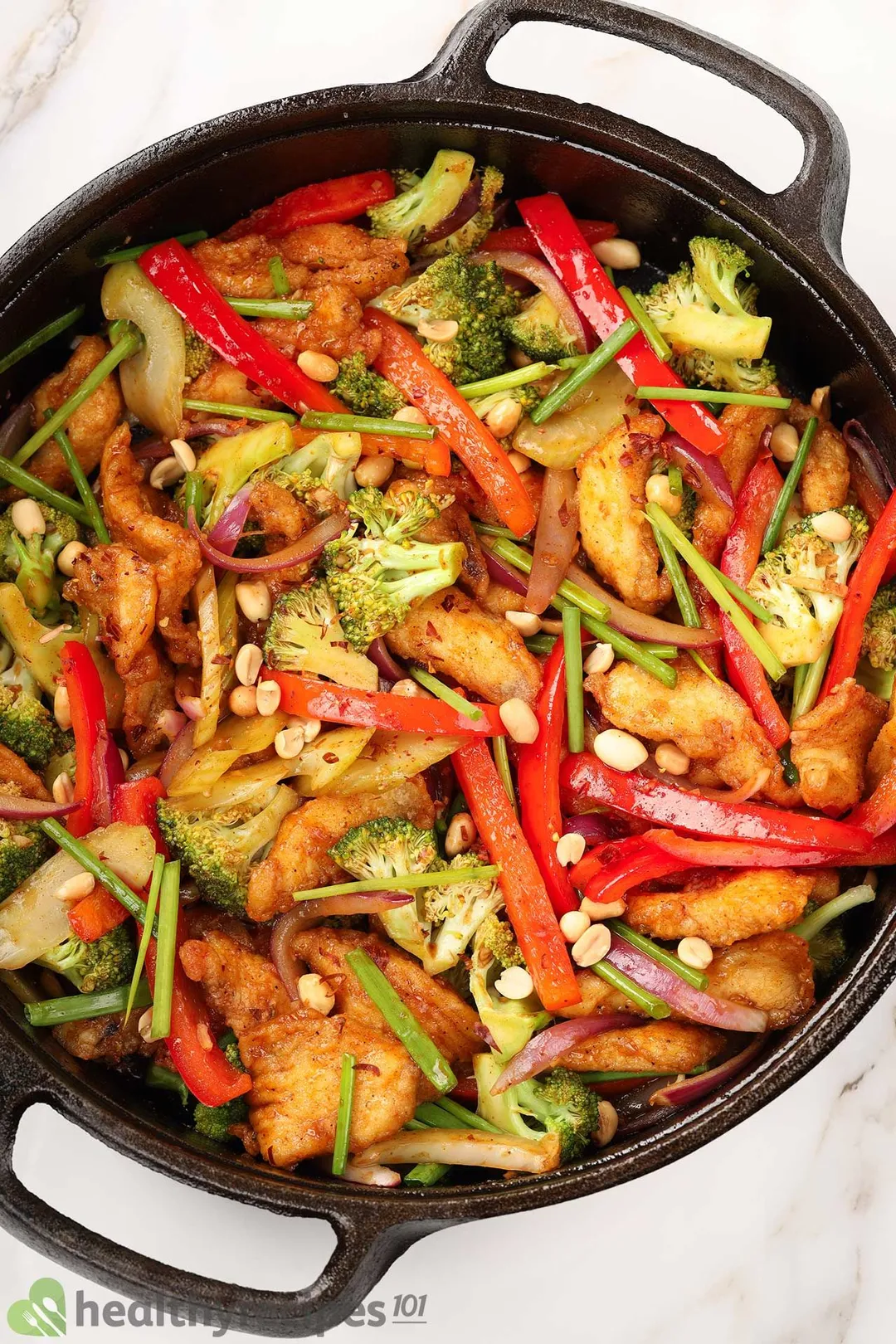
- Freeze to firm
One way to get nicely sliced chicken pieces is to partly freeze the fillets before prepping. 30 minutes in the freezer is enough to firm up the chicken and allow the knife to go smoothly back and forth against the meat grain without wiggling to the sides.
Don't worry, the chicken pieces will soon come back to room temp minutes later.
- Get everything ready before starting
Stir-frying is a non-stop process — it's only 10 minutes in this recipe and more often than not, everything will be finished before you even know it. You should slice the chicken, prep the veggies, measure out all the seasonings, and have them all ready to use on a nearby countertop. Having everything ready to go reduces the risk of accidentally overcooking or burning whatever is in the pan as you are able to focus on it.
- Watch the size of the vegetable pieces
The long-cooking vegetables should be chopped smaller, and the short-cooking ones should be chopped into larger chunks. For example, we cut the bell peppers and red onions into thin strips of comparable size, while the broccoli florets are a bit larger.
Also, the vegetables should be rinsed and drained well or patted dry to achieve a crispy stir-fry texture (but not soggy).
- Cook everything separately and combine them later
You should brown the chicken and the vegetables separately because they cook at different rates. If you don't have a large skillet, consider dividing the chicken into batches to avoid overcrowding and unevenly cooking the meat.
Only sear the chicken quickly for 5 minutes and stir-fry the veggies for 2 minutes to avoid overcooking as they will finish cooking in the sauce later.
How to Store and Reheat the Leftover
- Storing
Leftovers can be stored in airtight containers in the refrigerator for up to 5 days. There is a risk of the food becoming mushy when thawed, so it’s best to freeze the chicken and the sauce separately.
That being said, this dish can still last well in the freezer for up to 3 months. Let the portions cool completely before storing, and defrost them properly in the fridge overnight before reheating.
- Reheating
To reheat, put the leftover portions in the microwave or the oven and warm them up quickly for a minute or two. Stir halfway through reheating and add a splash of water or broth to thin out the sauce a little bit.
Hunan sauce can also be made in large batches in advance and be kept ready for later use. Simply whisk the ingredients in advance, cover, and store them in the refrigerator until you're ready to cook and assemble.
What to Serve With this Dish
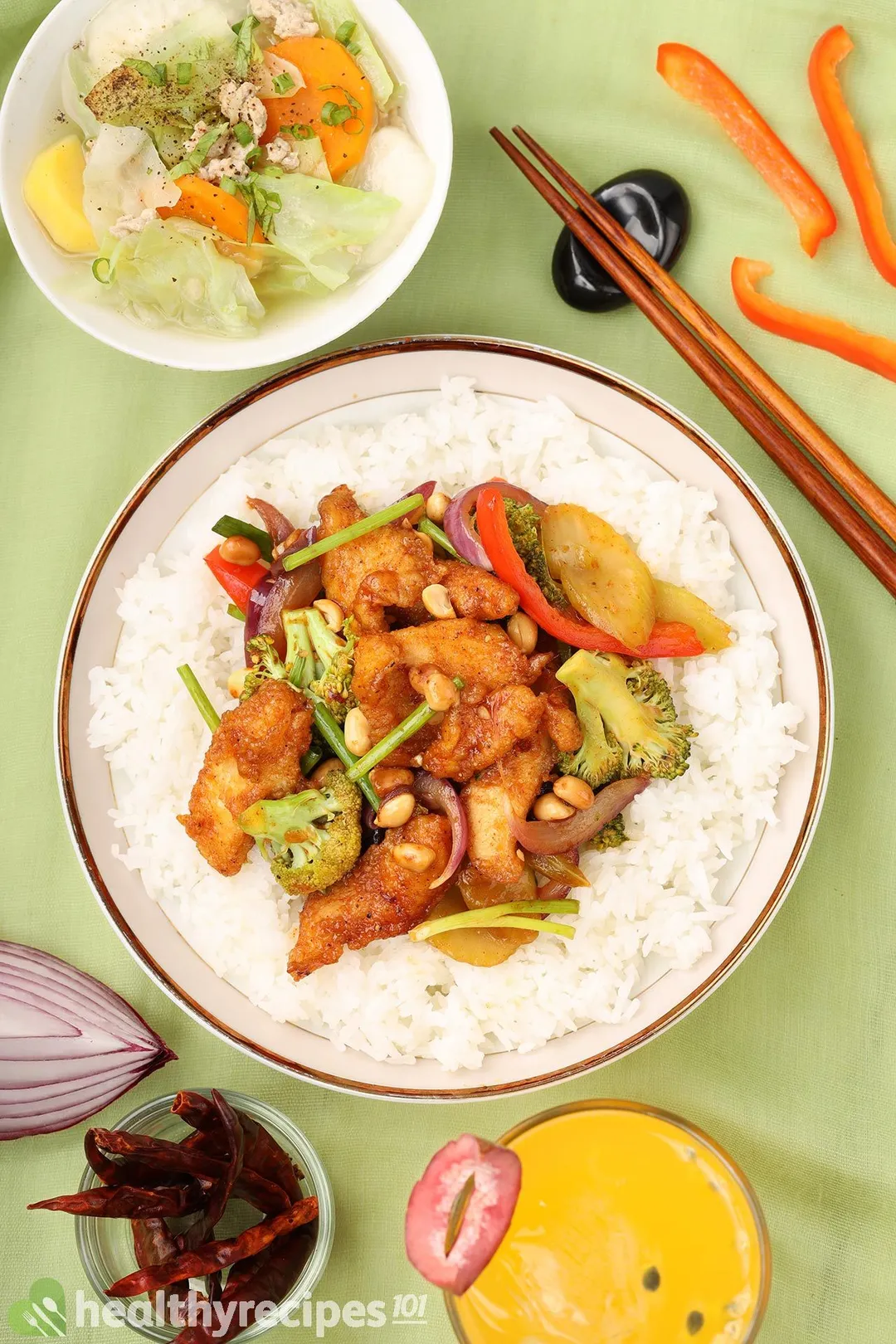
This Hunan chicken is already loaded with robust flavors, so you'll only need a light and fresh side dish to accompany it. For a cozy, comforting Asian-style homemade meal, we recommend this cabbage soup. If you want a bit of crunchiness and perhaps even some heat to tie in with the main course, perhaps this papaya salad or edamame salad will be suitable.
Don't forget to also check out our Hunan Shrimp Recipe and Hunan Beef Recipe!
How to make Hunan Chicken
Spicy food can be tricky to make, especially when you're trying to find the right balance between heat and flavor. No need to worry about that when you're making this Hunan chicken! Delightfully spicy yet still savory and umami, it's a winner at any meal!
- cook TIME 10 mins
- prep TIME 10 mins
- total TIME 20 mins
- COURSE Main dish
- CUISINE Chinese
- SERVINGS servings
- CALORIES 490 kcal
INGREDIENTS
- 14 oz skinless boneless chicken breasts (thinly sliced)
- 6 oz broccoli (halved)
- 4 oz red bell pepper (julienned)
- 4 oz red onion (sliced)
- 2 oz celery (chopped into 1-inch pieces)
- 2 tsp cornstarch (for the sauce)
- 1/4 cup cornstarch (for coating the chicken)
- 2 tsp garlic (minced)
- 2 tsp rice vinegar
- 2 tsp honey
- 1 tsp ginger (grated)
- 1/4 cup unsalted chicken broth
- 1 tbsp oyster sauce
- 1 1/2 tbsp reduced-sodium soy sauce
- 1/2 tsp chili powder
- 1/2 tbsp sriracha
- 1 tsp paprika
- 1/2 tsp ground black pepper
- 1 cup canola oil (*)
- 1 tbsp canola oil
- 2 tbsp scallions (chopped)
- 1 oz roasted peanuts (peeled)
- 1/2 tsp red pepper flakes
- 3 cups cooked medium-grain white rice
INSTRUCTIONS
Make the Hunan sauce: In a small bowl, whisk together 2 tsp cornstarch, 2 tsp minced garlic, 2 tsp rice vinegar, 2 tsp honey, 1 tsp grated ginger, 1/4 cup unsalted chicken broth, 1 tbsp oyster sauce, 1 1/2 tbsp reduced-sodium soy sauce, 1/2 tsp chili powder, 1/2 tbsp sriracha, 1 tsp paprika, and 1/2 tsp ground black pepper. Stir well.
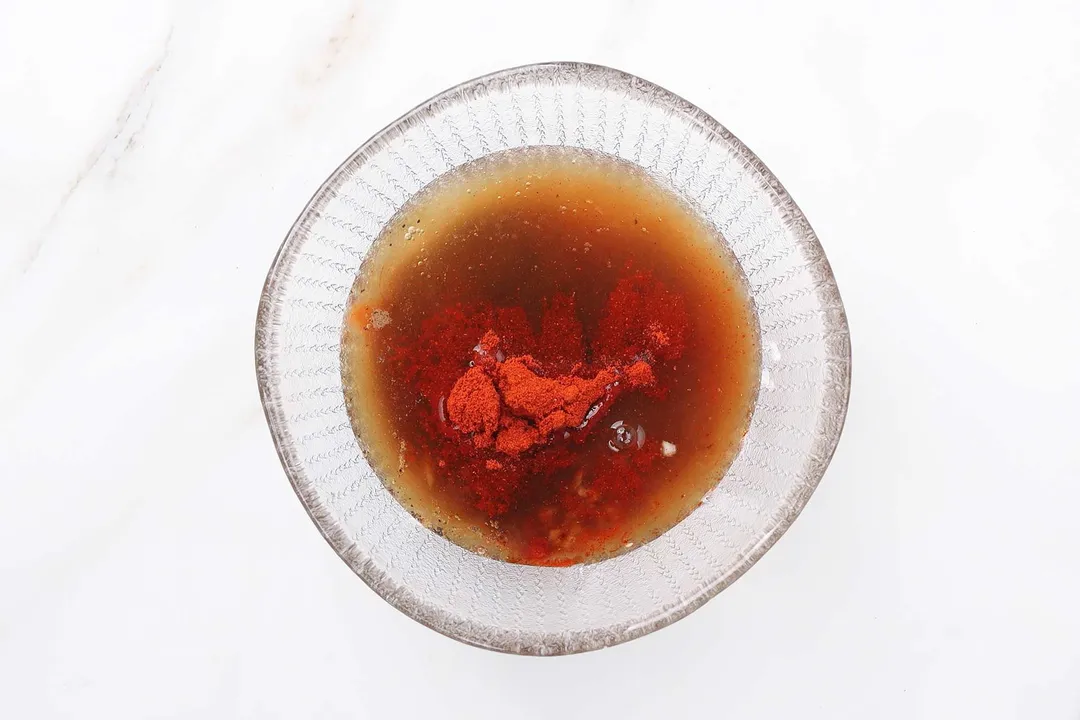
Coat 14 oz chicken with 1/4 cup cornstarch.
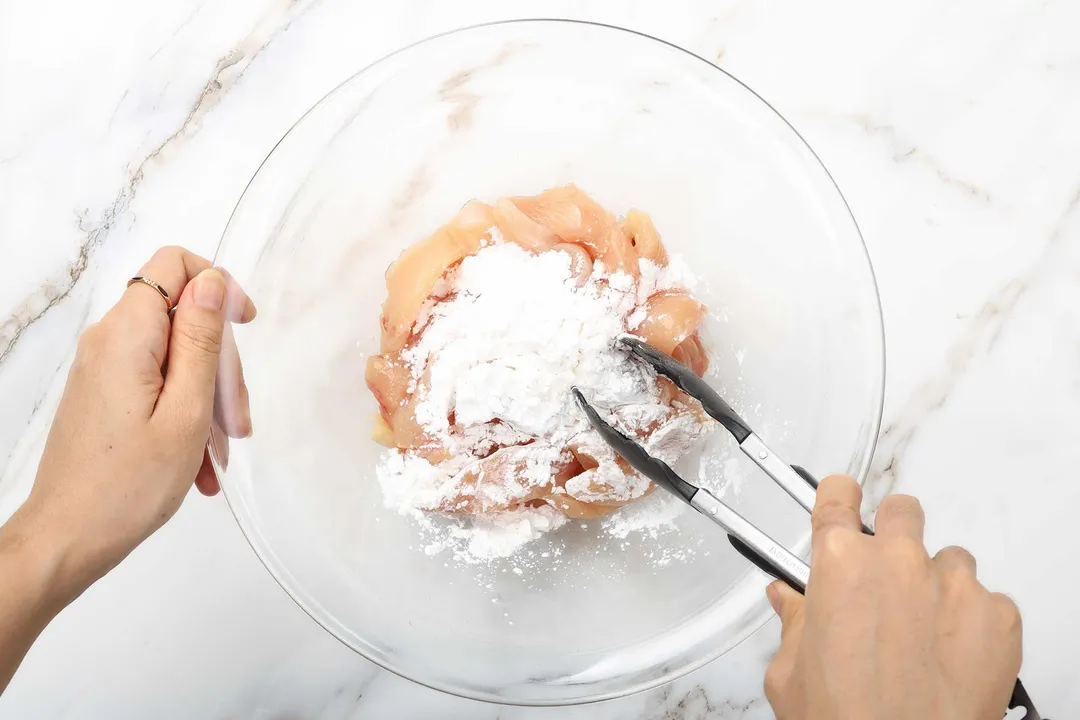
In a cast-iron skillet, heat 1 cup canola oil (*) over medium heat. Deep-fry the coated chicken for 5 minutes until golden brown on both sides. Remove the chicken, drain the excess oil with a paper towel, and set aside.
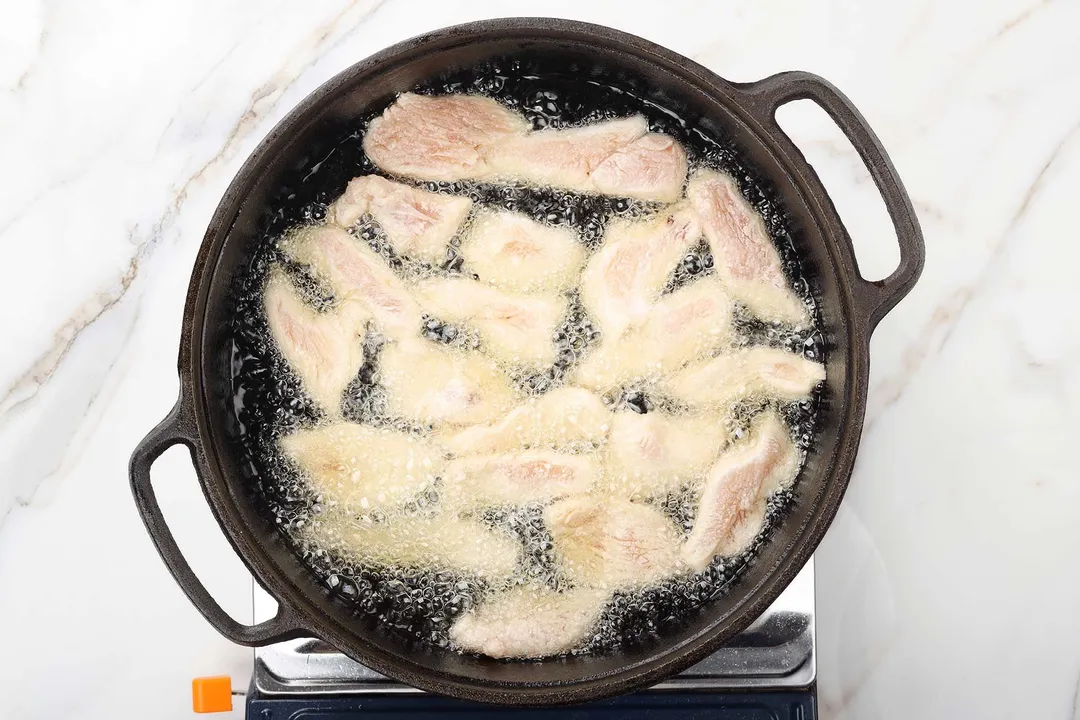
Add another 1 tbsp canola oil to the skillet. Add 6 oz broccoli, 2 oz celery, 4 oz red onion, and 4 oz red bell pepper. Stir-fry the vegetables for 2 minutes.
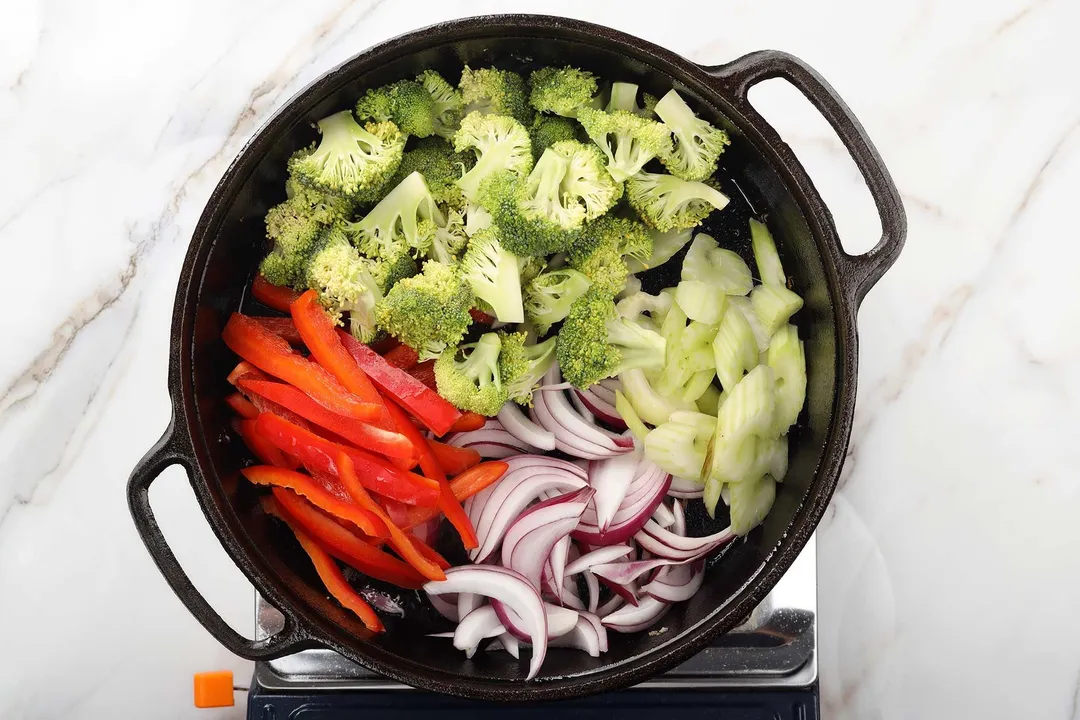
Return the fried chicken back to the skillet. Stir.
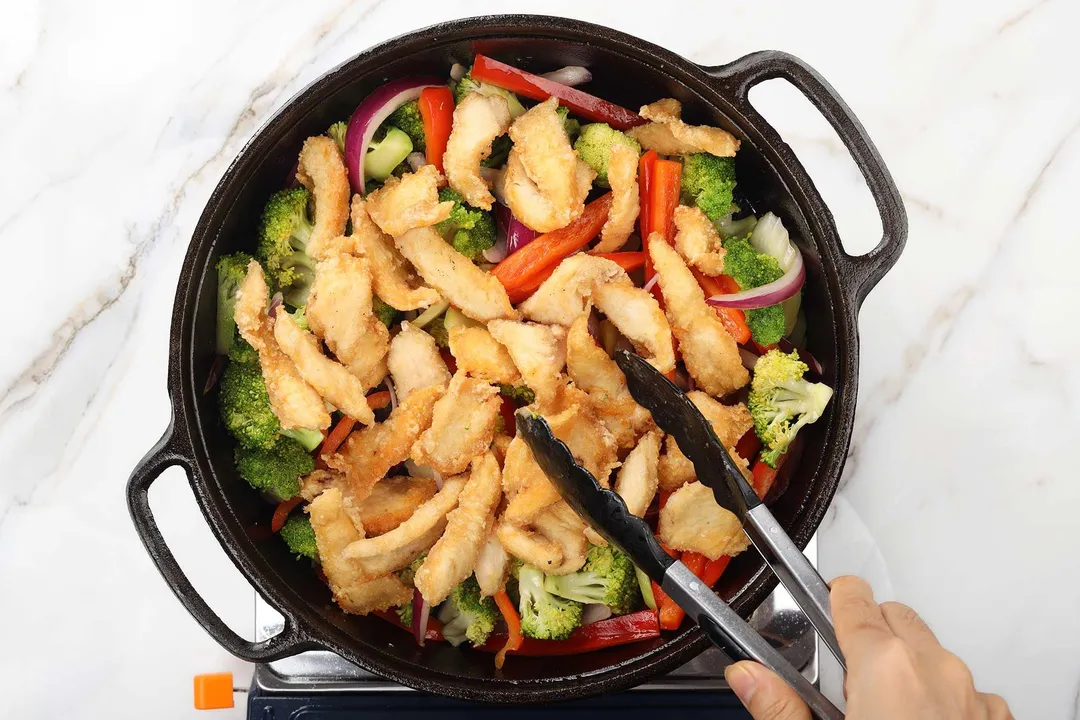
Add the Hunan sauce to the skillet. Quickly toss everything together.
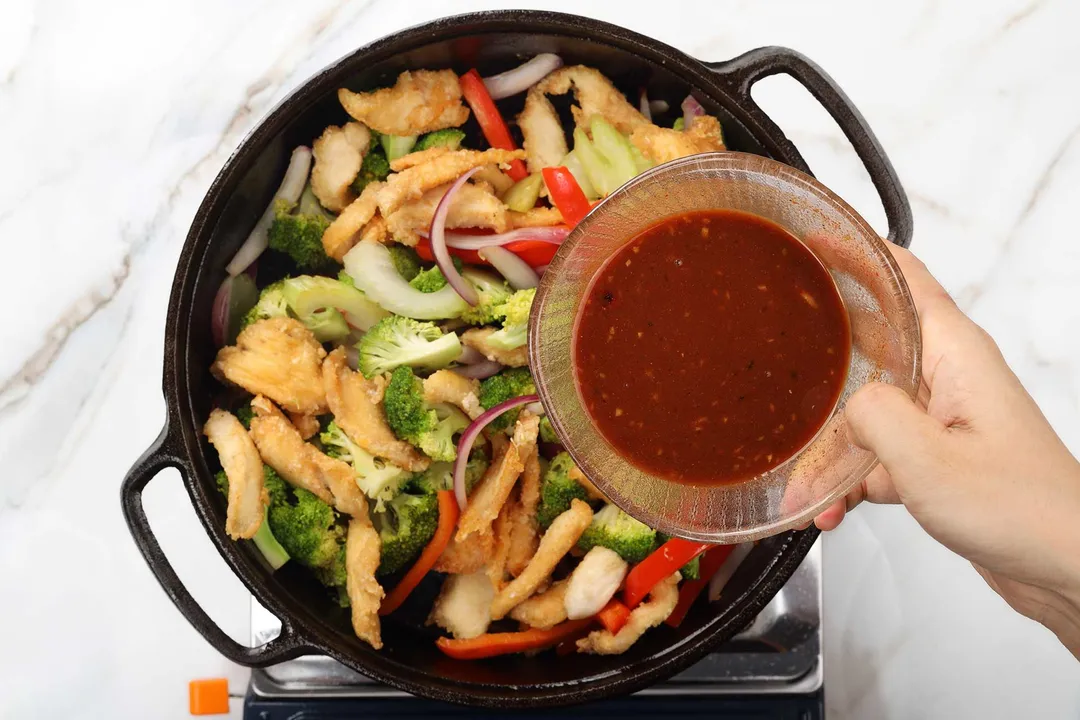
Turn off the heat. Add 2 tbsp chopped scallions and 1 oz roasted peanuts while stirring constantly.
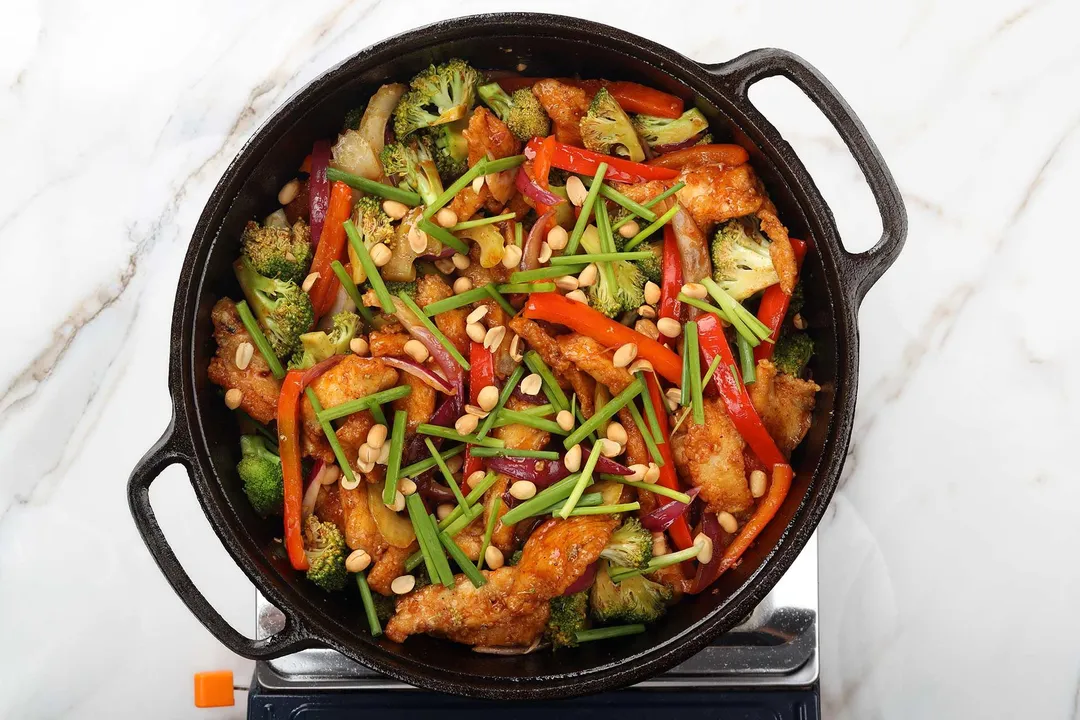
Sprinkle 1/2 tsp red pepper flakes on top.
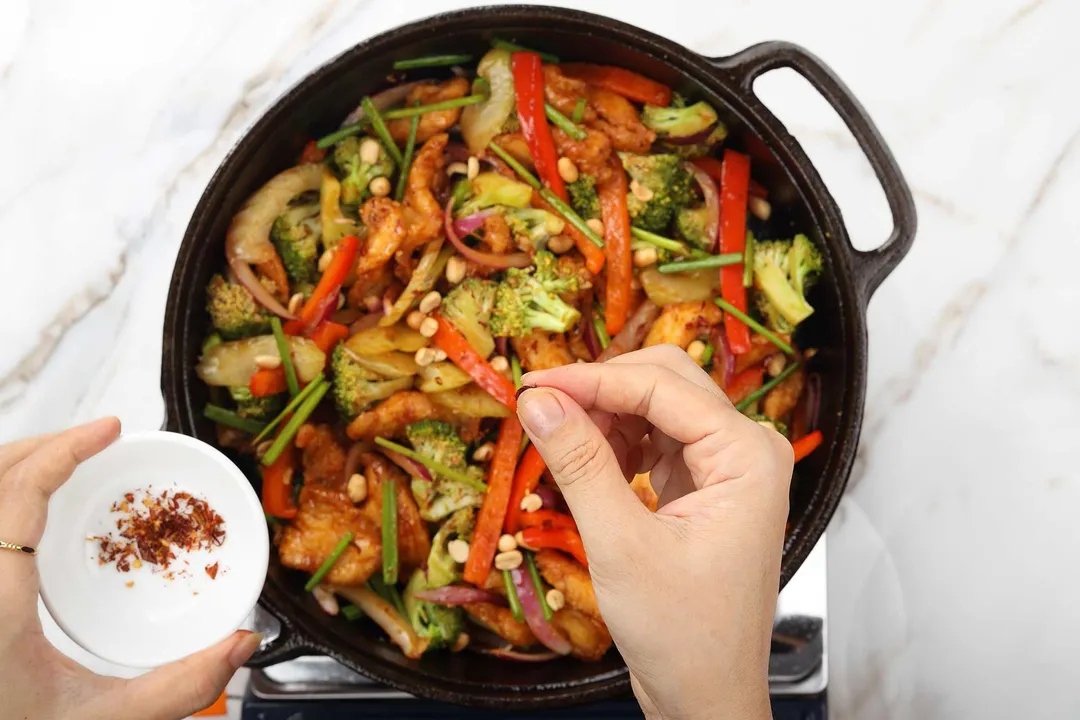
Remove Hunan chicken from the skillet. Serve hot with 3 cups of cooked medium-grain white rice on the side.
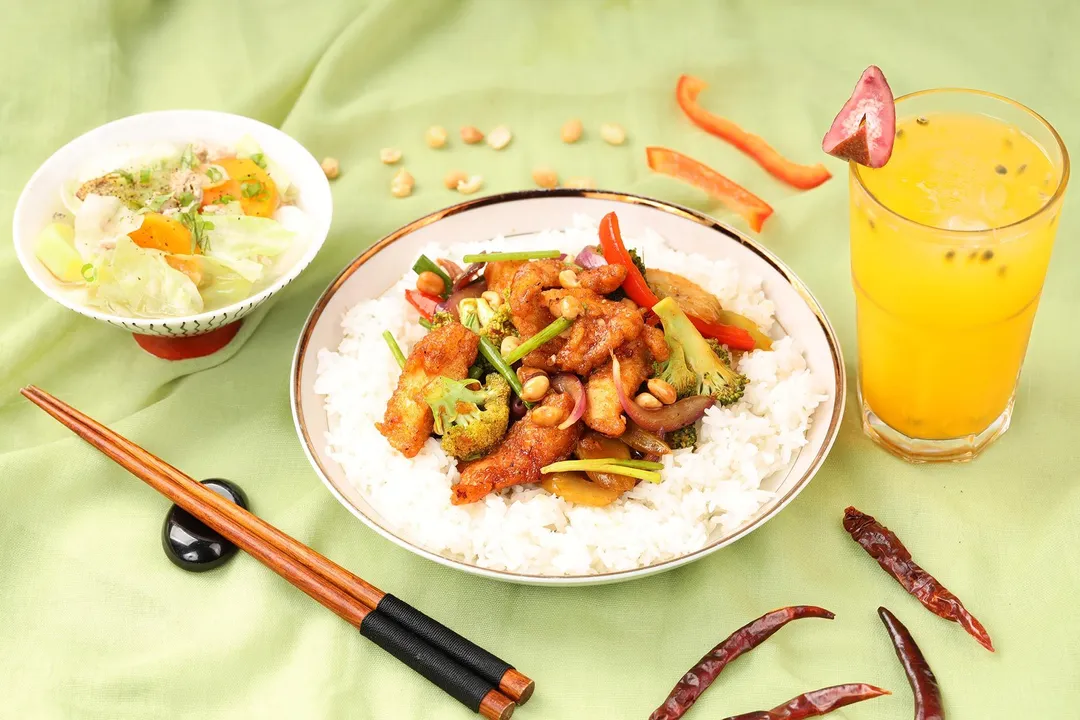
(*) Only part of this ingredient will end up in the final product and we have calculated nutritional values based on that amount. The whole amount is needed for the coating and cooking process, but what actually ends up being consumed is 1/2 tablespoon of canola oil.
NUTRITION
Luna Regina
Writer, Author